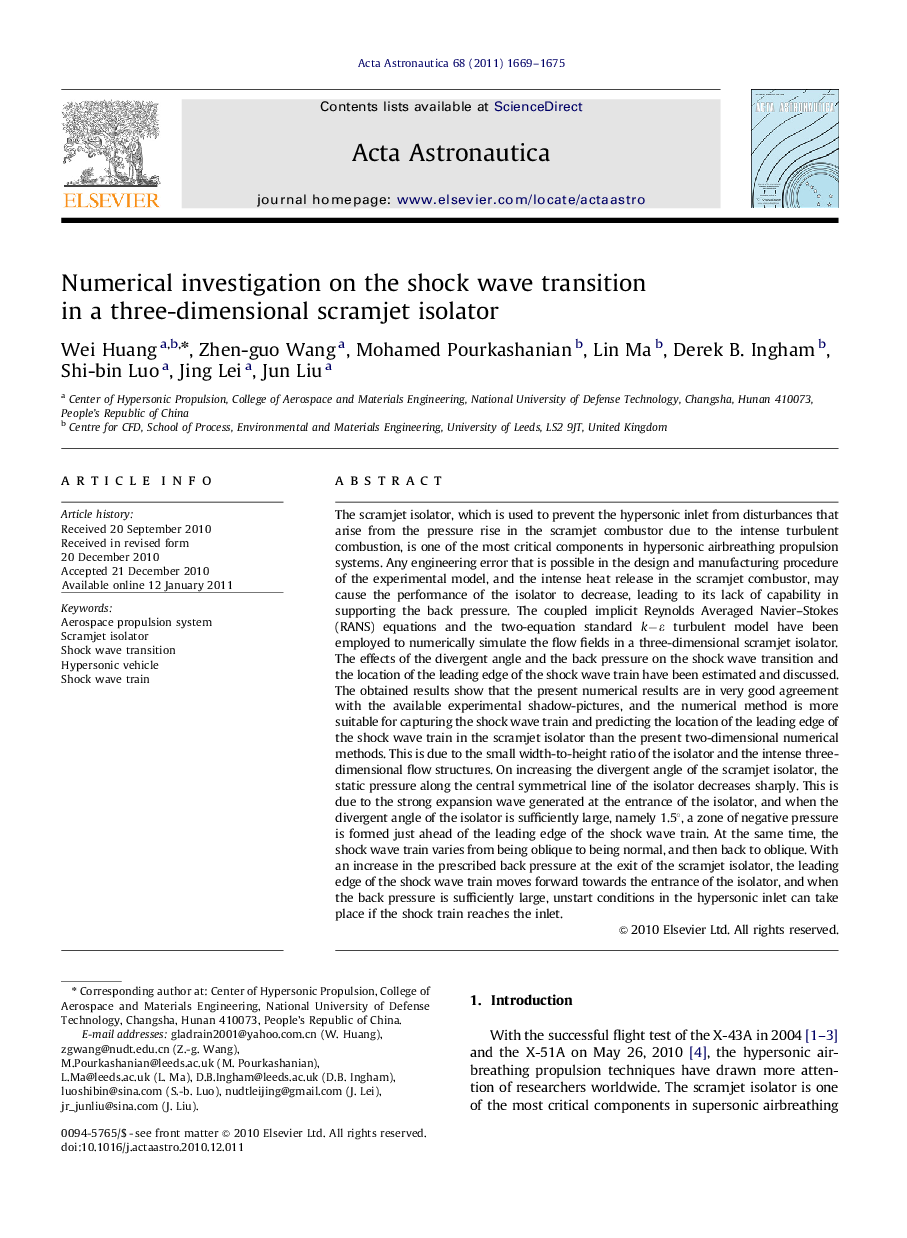| Article ID | Journal | Published Year | Pages | File Type |
|---|---|---|---|---|
| 1715666 | Acta Astronautica | 2011 | 7 Pages |
The scramjet isolator, which is used to prevent the hypersonic inlet from disturbances that arise from the pressure rise in the scramjet combustor due to the intense turbulent combustion, is one of the most critical components in hypersonic airbreathing propulsion systems. Any engineering error that is possible in the design and manufacturing procedure of the experimental model, and the intense heat release in the scramjet combustor, may cause the performance of the isolator to decrease, leading to its lack of capability in supporting the back pressure. The coupled implicit Reynolds Averaged Navier–Stokes (RANS) equations and the two-equation standard k−ε turbulent model have been employed to numerically simulate the flow fields in a three-dimensional scramjet isolator. The effects of the divergent angle and the back pressure on the shock wave transition and the location of the leading edge of the shock wave train have been estimated and discussed. The obtained results show that the present numerical results are in very good agreement with the available experimental shadow-pictures, and the numerical method is more suitable for capturing the shock wave train and predicting the location of the leading edge of the shock wave train in the scramjet isolator than the present two-dimensional numerical methods. This is due to the small width-to-height ratio of the isolator and the intense three-dimensional flow structures. On increasing the divergent angle of the scramjet isolator, the static pressure along the central symmetrical line of the isolator decreases sharply. This is due to the strong expansion wave generated at the entrance of the isolator, and when the divergent angle of the isolator is sufficiently large, namely 1.5°, a zone of negative pressure is formed just ahead of the leading edge of the shock wave train. At the same time, the shock wave train varies from being oblique to being normal, and then back to oblique. With an increase in the prescribed back pressure at the exit of the scramjet isolator, the leading edge of the shock wave train moves forward towards the entrance of the isolator, and when the back pressure is sufficiently large, unstart conditions in the hypersonic inlet can take place if the shock train reaches the inlet.
